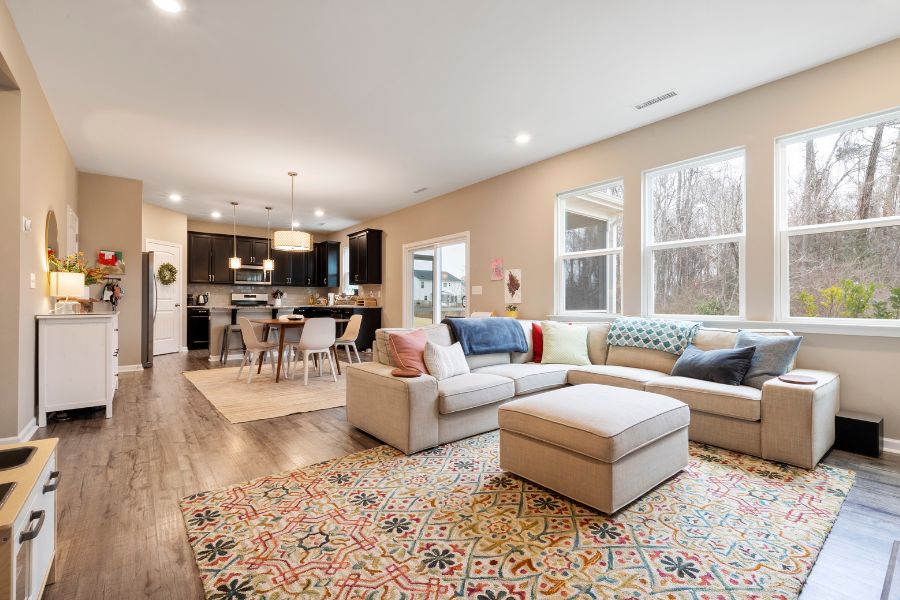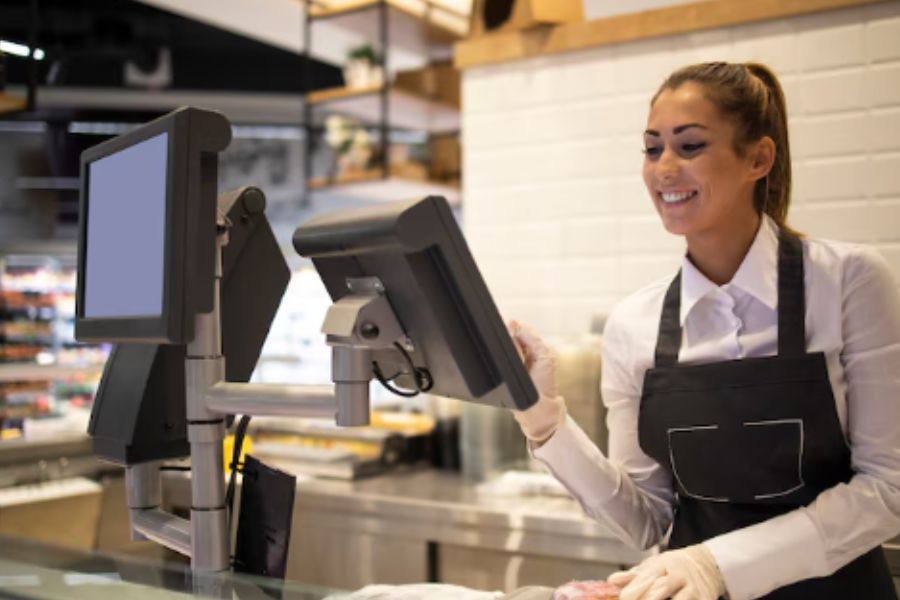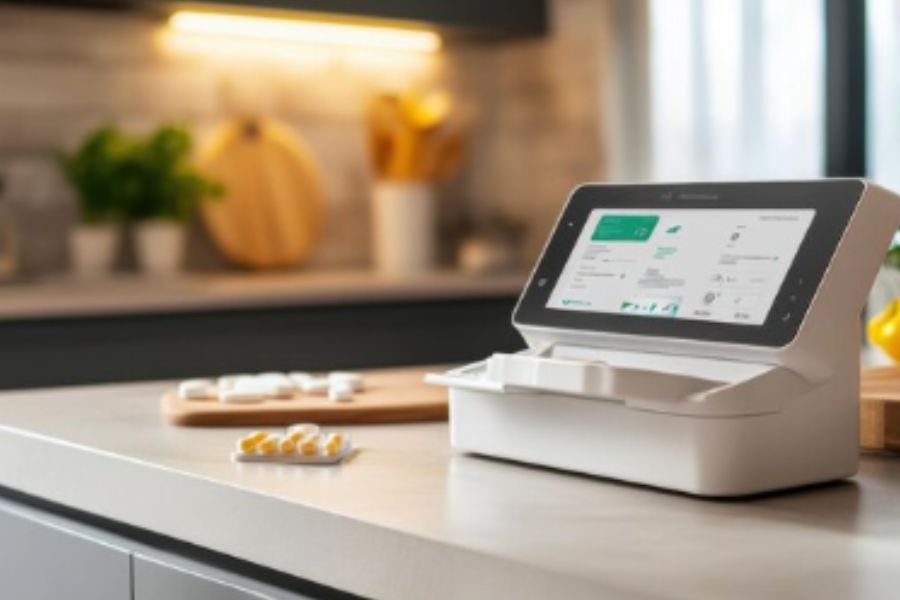A showroom can impress visitors, but without a smooth checkout process, potential buyers may walk away instead of making a purchase. Relying on outdated systems or manual tracking often leads to delays, pricing errors, and missed sales opportunities. An efficient home POS eliminates these bottlenecks by speeding up transactions, keeping inventory accurate, and creating a hassle-free shopping experience. This guide walks through the key steps to choosing and setting up a POS system that keeps your showroom running efficiently.
Highlights:
- A furniture showroom handles large, high-value items with complex inventory needs, custom orders, and varied delivery options, making efficient stock management and flexible payment solutions essential.
- Implementing a Home POS involves assessing business needs, choosing compatible hardware and software, training staff, and integrating it with inventory and payment systems for a seamless operation.
Overview of Home POS Systems
With the global furniture market valued at 579 billion U.S. dollars in 2023 and projected to reach 873 billion by 2030, businesses must adapt to changing consumer buying habits. A home POS System caters to industries like furniture, home décor, electronics, and automobiles, where customers browse, consult sales representatives, and finalize purchases after careful consideration, often requiring a flexible payment process.

Unlike traditional retail POS systems that focus on quick transactions, showroom POS solutions prioritize order management, customer relationship management (CRM), inventory tracking, and flexible payment processing.
One of the biggest differences between showroom POS systems and standard retail POS solutions is the nature of the sales cycle and transaction process. In showrooms, customers typically do not purchase items instantly but rather receive quotes, pay deposits, or request financing options before finalizing a sale.
These systems must support high-value transactions, installment payments, personalized pricing, and omnichannel integration, ensuring a seamless experience across both physical and online sales channels.
Steps to Implement A Home POS for Your Showroom
A showroom POS system needs to align with sales processes, customer interactions, and inventory management. Each step plays a role in keeping transactions smooth while supporting long-term growth.
Identify What Your Showroom Needs
A showroom operates differently from a traditional retail store. Purchases often involve consultations, custom orders, and deliveries rather than instant transactions. Before selecting a home POS system, it’s important to look at:
- How sales are structured: Do customers place orders immediately, or do they request quotes and return later?
- Stock tracking requirements: Does the showroom need to monitor inventory across different warehouses or suppliers?
- Customer interaction methods: Should the system store past purchases and preferences for personalized service?
- Payment flexibility: Will deposits, installment plans, or financing options be part of the process?
- Connection between online and in-store sales: Does the showroom need an integrated platform to handle both?
Defining these factors helps in selecting a system that fits daily operations without adding unnecessary complexity.
Choose Between Cloud-Based and On-Premise Systems
One of the key choices when setting up a POS system is deciding between using a cloud-based solution or one installed on local servers.
- Cloud POS: Cloud-based systems provide remote access to sales, inventory, and customer data. They also integrate easily with eCommerce and CRM platforms, with automatic updates to keep operations running smoothly.
- On-Premise POS: Installed on local servers, this option does not rely on an internet connection for daily operations. While it offers more control over data security, it typically involves higher upfront costs and ongoing maintenance.
The right choice depends on business goals, IT capabilities, and how much flexibility is needed for remote access and integrations.
Look for Features That Support Showroom Sales
Showroom transactions often involve quotes, consultations, and special orders rather than quick purchases at a checkout counter. A suitable home POS should include:
- Customer profiles that track purchase history and preferences
- Quoting tools that allow staff to provide estimates before finalizing sales
- Order tracking to manage special requests and deliveries
- Payment options that include deposits, split payments, and financing
- Mobile access so sales representatives can assist customers without being tied to a fixed terminal
- Stock visibility across locations and supplier networks
- Reports that track sales trends, customer behavior, and product demand
A system with these capabilities is an effective tool for staff to manage long sales cycles, follow up with leads, and keep transactions organized.
Prepare for Growth and Future Changes
A home POS system should be able to keep up with business expansion and shifts in customer expectations. When selecting a solution, it’s useful to check for:
- Support for multiple locations if opening new showrooms is a possibility
- Connections with ERP and eCommerce platforms to keep data in sync
- Cloud options for easier system upgrades and remote management
- New payment technologies such as Buy Now Pay Later and digital wallets
- AI-driven tools that suggest products based on past purchases
A system that adapts to business growth prevents frequent software changes and operational disruptions.
Integration with Other Systems
A home POS system should connect with existing business tools to reduce manual work and minimize errors. Key integrations include:
- Inventory tracking – Keeps stock levels updated across warehouses and sales channels.
- Customer relationship management (CRM) – Stores purchase history and preferences for better service.
- eCommerce platforms – Synchronizes online and in-store transactions.
- Accounting software – Sends sales data directly to financial records.
- Marketing tools – Helps manage promotions, loyalty programs, and email campaigns.
When choosing a POS system, it’s important to check if it connects with existing software or if custom development is required.
User-Friendly Interface and Accessibility
A complex system slows down staff and increases training time. An ideal POS should be easy to navigate, that way, employees can complete tasks quickly. Features that improve usability include:
- Intuitive layout – Clear menus and straightforward navigation.
- Touchscreen compatibility – Makes transactions faster, especially on mobile devices.
- Customizable settings – Allows businesses to tailor workflows based on their needs.
- Remote access – Enables owners and managers to monitor sales and inventory from anywhere.
Rather than struggling with software, employees should master the new POS with ease to spend their focus on better customer service.
Cost and Pricing Models
POS pricing varies based on features, deployment methods, and business size. Understanding total costs helps avoid unexpected expenses. Key pricing factors include:
- Subscription vs. one-time purchase – Cloud-based systems typically charge a monthly fee, while on-premise systems require an upfront investment.
- Hardware costs – Includes tablets, barcode scanners, receipt printers, and payment terminals.
- Integration fees – Some systems charge extra for connecting with third-party applications.
- Transaction fees – Certain providers take a percentage of each sale processed through their platform.
- Support and updates – Cloud-based solutions often include updates in their pricing, while on-premise software may require separate maintenance fees.
A system should fit the business’s budget while providing the necessary features without hidden charges.
Customer Support and Reliability
Technical issues can disrupt sales, so reliable support is a must. Before choosing a provider of home POS, it’s helpful to check:
- Availability – Does support operate 24/7, or only during business hours?
- Response time – How quickly does the provider resolve issues?
- Support channels – Are help options available through phone, email, and live chat?
- Training resources – Does the provider offer tutorials, guides, or live training sessions?
- User reviews – What do other businesses say about their experience?
A provider with strong customer service ensures that businesses can resolve problems quickly, minimizing downtime and lost sales.
ConnectPOS – The Home POS that Empowers Your Service
ConnectPOS is a tailored home POS that brings a modern approach to furniture retail, combining omnichannel point-of-sale, multi-source inventory (MSI), and self-checkout capabilities. With an integrated system designed for smooth operations, businesses can enhance customer experience and optimize store management.
- Automated Workflows for Efficiency: Cut down on manual work by automating transactions, stock tracking, and customer interactions, all with real-time data.
- Personalized Support Across Every Touchpoint: Assistance is available across multiple channels and time zones, ensuring quick responses and customized solutions for every business need.
- Tailored for Furniture Retail: A flexible system that adjusts to changing inventory, high-value purchases, and complex sales cycles.
- Optimize Showroom Management with Unique Features: Track vendor stock, transfer inventory, and manage custom orders while supporting payment options like deposits, layaways, and BOPIS.
- Boost Customer Engagement and Sales: Self-checkout, AI-driven product suggestions, and loyalty rewards help create a smooth shopping experience.
- Smooth Integration with Leading Business Tools: Sync with eCommerce platforms, ERP systems, accounting tools, and CRM software to keep everything in one place.
Take your furniture store to the next level with ConnectPOS and create a frictionless shopping experience that keeps customers coming back.
FAQs: Home POS
Why should a showroom invest in a POS system?
A POS system simplifies sales, tracks inventory, and improves customer service by centralizing transactions and data management.
What factors should be considered when choosing a home POS?
Key considerations include compatibility with existing systems, ease of use, integration options, reporting features, and scalability for future growth.
Should a showroom opt for a cloud-based or on-premise POS?
Cloud-based systems allow remote access and automatic updates, while on-premise solutions provide more control over data and security. The choice depends on business needs.
What features are most important in a showroom POS?
Look for inventory tracking, real-time sales reporting, customer management, flexible payment options, and integration with eCommerce and accounting software.
Conclusion
Running a furniture showroom means keeping track of stock, handling custom orders, and making checkout seamless for customers. A Home POS should manage these tasks while keeping operations organized and sales flowing smoothly. Without the right system, inventory mismatches and payment issues can slow everything down.
ConnectPOS helps retailers stay on top of these challenges, making it easier to manage both in-store and online sales. Contact us to see how it can support your business.



